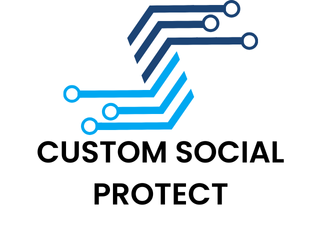Mastering Compliance: A Guide to Adhering to Global Cybersecurity Standards in AI Applications
In the rapidly evolving landscape of artificial intelligence (AI), ensuring compliance with global cybersecurity standards is not just a necessity but a critical component of maintaining trust and security. Here’s a comprehensive guide to help organizations navigate the complex world of compliance in AI applications.
Understanding the Regulatory Landscape
The regulatory environment for AI and cybersecurity is becoming increasingly complex. New regulations and guidelines are being introduced to address the unique challenges posed by AI-driven systems.
Topic to read : How do you ensure data integrity and security in blockchain-based voting systems?
Key Regulations and Standards
Several key regulations are shaping the cybersecurity landscape for AI applications:
- EU AI Act: This regulation aims to ensure that AI systems are safe, transparent, and respect fundamental rights. It imposes strict requirements on high-risk AI systems, including those used in critical infrastructure, healthcare, and law enforcement.
- NIS-2 Directive: The Network and Information Security Systems Act focuses on enhancing the resilience of critical infrastructure against cyber threats. It mandates robust security measures and incident reporting for organizations in critical sectors.
- Cyber Resilience Act (CRA): This act sets common cybersecurity standards for products with digital elements, ensuring they are secure by design and by default.
- ISO 27001, ISO 22301, and ISO 42001: These standards provide frameworks for information security management, business continuity management, and the new standard for artificial intelligence, respectively. They offer best practices for ensuring data security, business continuity, and AI compliance.
Risk Management and Compliance
Effective risk management is the cornerstone of compliance in AI applications. Here’s how organizations can ensure they are on the right track:
Also to read : Essential Strategies for Optimizing AI Model Training in Distributed Systems
Conducting Risk Assessments
Risk assessments are crucial for identifying potential vulnerabilities and threats in AI systems. Here are some steps to follow:
- Identify Assets: Determine the sensitive data and critical systems that need protection.
- Assess Threats: Evaluate the potential threats and attack vectors, including AI-specific risks like data poisoning and model hijacking.
- Evaluate Vulnerabilities: Assess the vulnerabilities in the AI system, including those in the data, algorithms, and infrastructure.
- Determine Risk: Calculate the likelihood and potential impact of each identified risk.
### Example Risk Assessment Steps
- **Asset Identification**:
- Sensitive data (e.g., personal identifiable information)
- Critical AI models and algorithms
- Infrastructure components (e.g., servers, networks)
- **Threat Assessment**:
- Data breaches
- Unauthorized access
- AI-specific threats (e.g., data poisoning, model hijacking)
- **Vulnerability Evaluation**:
- Weaknesses in data encryption
- Flaws in algorithm design
- Network vulnerabilities
- **Risk Determination**:
- Likelihood of each threat exploiting a vulnerability
- Potential impact on the organization and its stakeholders
Implementing Internal Controls
Internal controls are essential for ensuring compliance and mitigating risks. Here are some best practices:
- Access Controls: Implement strict access controls to prevent unauthorized access to sensitive data and AI systems.
- Data Encryption: Encrypt data both in transit and at rest to protect against data breaches.
- Regular Updates and Patches: Keep all systems and software up-to-date with the latest security patches.
- Monitoring and Logging: Continuously monitor AI systems for anomalies and maintain detailed logs for incident response.
### Internal Controls Best Practices
- **Access Controls**:
- Role-Based Access Control (RBAC)
- Multi-Factor Authentication (MFA)
- **Data Encryption**:
- Use industry-standard encryption protocols (e.g., AES, TLS)
- Encrypt data both in transit and at rest
- **Regular Updates and Patches**:
- Automated patch management systems
- Regular security audits
- **Monitoring and Logging**:
- Real-time monitoring tools
- Detailed logging for incident response
Integrating AI into Cybersecurity Strategies
AI can be a powerful tool in enhancing cybersecurity, but it must be integrated carefully to ensure compliance.
AI-Driven Security Tools
AI-driven tools can help in continuous monitoring and threat detection:
- Threat Intelligence: AI can analyze vast amounts of data to identify potential threats and predict attack patterns.
- Anomaly Detection: AI algorithms can detect anomalies in system behavior that may indicate a security breach.
- Incident Response: AI can automate incident response processes, reducing the time to respond to security incidents.
Ensuring AI Compliance
When integrating AI into cybersecurity strategies, it’s crucial to ensure compliance with regulatory requirements:
- Data Privacy: Ensure that AI systems handle sensitive data in compliance with data privacy regulations such as GDPR and CCPA.
- Transparency: Maintain transparency in AI decision-making processes to comply with regulations like the EU AI Act.
- Security Measures: Implement robust security measures to protect AI systems from cyber threats, aligning with standards like ISO 27001.
### AI Compliance Checklist
- **Data Privacy**:
- Comply with GDPR, CCPA, and other data privacy regulations
- Ensure data anonymization and pseudonymization
- **Transparency**:
- Provide clear explanations for AI-driven decisions
- Maintain audit trails for AI decision-making processes
- **Security Measures**:
- Implement robust access controls and encryption
- Regularly update and patch AI systems
Best Practices for Compliance Management
Effective compliance management involves several best practices that organizations should adopt:
Continuous Monitoring
Continuous monitoring is key to ensuring real-time compliance:
- Real-Time Alerts: Set up real-time alerts for any deviations from compliance standards.
- Automated Compliance Tools: Use automated tools to monitor and report on compliance metrics.
Training and Awareness
Training and awareness programs are crucial for ensuring that all employees understand the importance of compliance:
- Regular Training Sessions: Conduct regular training sessions on compliance requirements and best practices.
- Awareness Campaigns: Run awareness campaigns to keep employees informed about the latest regulatory changes and compliance requirements.
Collaboration with Experts
Collaborating with experts can provide valuable insights and ensure that organizations stay ahead of compliance challenges:
- Consult with Compliance Experts: Engage with compliance experts to review and improve compliance strategies.
- Participate in Industry Forums: Participate in industry forums and conferences to stay updated on the latest compliance trends and best practices.
### Compliance Management Best Practices
- **Continuous Monitoring**:
- Real-time alerts for compliance deviations
- Automated compliance tools
- **Training and Awareness**:
- Regular training sessions on compliance
- Awareness campaigns for employees
- **Collaboration with Experts**:
- Consult with compliance experts
- Participate in industry forums and conferences
Practical Insights and Actionable Advice
Here are some practical insights and actionable advice for organizations looking to master compliance in AI applications:
Stay Updated on Regulatory Changes
Regulatory changes are frequent and can have significant impacts on compliance strategies. Staying updated is crucial:
- Follow Regulatory Bodies: Follow updates from regulatory bodies such as the EU Commission and national data protection authorities.
- Subscribe to Compliance Newsletters: Subscribe to newsletters and alerts from compliance experts and industry associations.
Invest in Compliance Training
Investing in compliance training can help ensure that all employees are aware of and adhere to compliance requirements:
- Mandatory Training: Make compliance training mandatory for all employees.
- Role-Specific Training: Provide role-specific training to ensure that each employee understands their responsibilities in maintaining compliance.
Use Compliance Management Tools
Compliance management tools can streamline the compliance process and ensure that all requirements are met:
- Automated Compliance Software: Use automated software to monitor and report on compliance metrics.
- Compliance Dashboards: Use compliance dashboards to get a real-time view of compliance status.
### Actionable Advice for Compliance
- **Stay Updated on Regulatory Changes**:
- Follow regulatory bodies and industry associations
- Subscribe to compliance newsletters and alerts
- **Invest in Compliance Training**:
- Make compliance training mandatory
- Provide role-specific training
- **Use Compliance Management Tools**:
- Automated compliance software
- Compliance dashboards
Mastering compliance in AI applications is a multifaceted challenge that requires a deep understanding of regulatory requirements, risk management, and the effective integration of AI into cybersecurity strategies. By following the best practices outlined above, organizations can ensure they are well-equipped to navigate the complex landscape of global cybersecurity standards.
As Ensar Seker, Advisory CISO and DPO, notes, “The integration of AI into cybersecurity strategies is not just about technology; it’s about ensuring that these technologies are used in a way that respects privacy, security, and regulatory compliance. It’s a balancing act, but one that is crucial for the future of cybersecurity”.
By staying informed, investing in training, and leveraging the right tools, organizations can ensure compliance, mitigate risks, and protect their sensitive data in the age of AI.











